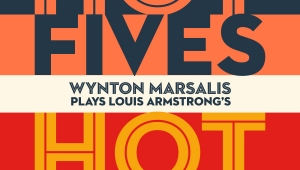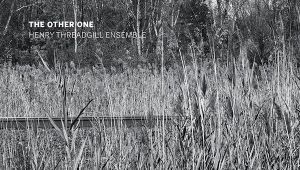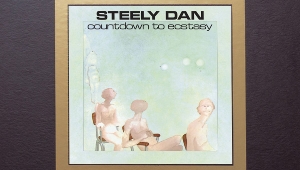| Columns Retired Columns & Blogs |
Recording of September 2011: Son of Chamber Symphony
 John Adams Son of Chamber Symphony, String Quartet
John Adams Son of Chamber Symphony, String QuartetJohn Adams, International Contemporary Ensemble; St. Lawrence String Quartet
Nonesuch 523014-2 (CD). 2011. Judith Sherman, prod.; John Kilgore, John D.S. Adams, engs.; Chris Allen, Tom Gloady, Nathan Chandler, asst. engs. DDD? TT: 54:00
Performance ****½
Sonics ****
When John Adams was working on his Chamber Symphony (1992), he became aware that his son Sam was in the next room watching old American cartoons, presumably those by Warner Bros. that used music by the great Raymond Scott. Hyperkinetic borrowings from Scott's witty scores made their way into that earlier work, and now into its successor, a fact hinted at by its humorous title: Son of Chamber Symphony. There's even a moment early on in this new work when the distinctive rhythmic rumble of Scott's masterpiece, "Powerhouse," can be fleetingly heard in what is, overall, a short but very sweet triumph.
Commissioned by Stanford University, Carnegie Hall, and the San Francisco Ballet, the 22-minute-long Son of Chamber Symphony was premiered at Stanford in 2007 by the group Alarm Will Sound, conducted by Alan Pierson. A version choreographed by Mark Morris saw its premiere six months later, in 2008, in a performance by the San Francisco Ballet. Similar in instrumentation to the Chamber Symphony, the Son is scored for flute/piccolo, oboe, clarinet, bass clarinet, bassoon, horn, trumpet, trombone, piano/celesta, two percussionists (one also playing keyboard sampler), two violins, viola, cello, and bass. The performance by the International Contemporary Ensemble is exemplary and the recorded sound throughout the disc is natural and first rate.
In interviews, and now in the liner notes for this album, Adams has said that the original Chamber Symphony was inspired by those cartoons his son was watching, and by Arnold Schoenberg's Chamber Symphony, Op.9. "Schoenberg's bounding fast-moving themes weren't so much 'stated' as they were launched like some daredevil circus performer shot out of a cannon. The hyperlyricism of its melodies sounded as if all of Tristan had been compressed into a tiny plutonium sphere, just one neutron short of going super-critical."
After the work had been performed a number of times, Adams wrote on his website (www.earbox.com) about another dimension of it: "Despite all the good humor, my Chamber Symphony turned out to be shockingly difficult to play. Unlike Phrygian Gates or Pianola, with their fundamentally diatonic palettes, this new piece, in what I suppose could be termed my post-Klinghoffer language, is linear and chromatic. Instruments are asked to negotiate unreasonably difficult passages and alarmingly fast tempi, often to [the] inexorable click of the trap set. But therein, I suppose, lies the perverse charm of the piece."
Opening with the same jouncing lines, rapid stop/start rhythms, and fast-moving, idea-filled nervous energy—what Adams calls the "spiky, bright-edged surfaces"—of its predecessor, the first movement of Son amply shows yet again what an incredibly nimble touch Adams has for string writing. In the slower, more sonorous second movement, which in spots echoes the end of an earlier Adams work, Gnarly Buttons, the composer uses a technique familiar to fans of his music: nomadic melodies drifting across strummed string harmonies with the occasional horn interlude—what Adams calls an "endless" (his quotes) melody. Increasingly criticized in some quarters for his slavish adherence to a fast-slow-fast construction in his chamber works, Adams turns more unsettled in this movement's ending, where the rhythms get jerkier and the horn parts more insistent---at one point, strings and horns virtually gallop in unison—dispelling the nostalgic tone that tinges this slow movement.
Opening in a bustle of horn squonks and busy strings, the final movement—which, Adams says, he toyed with calling Can-Can (as opposed to just III)—eventually mellows, winnowed down to trash-cans lids being banged together and a coda of percussive blips. Quotations from and allusions to Adams's earlier works occur in this final movement: one section is distinctly reminiscent of the "News" aria in Nixon in China, and later, a parody of Harmonielehre is sprinkled in. Yet these moments of self-reference do not keep Son of Chamber Symphony from looking forward. It is a fine addition to a canon of work that is arguably among the most approachable and ingenious by a modern American composer.
The String Quartet, very well rendered by the St. Lawrence Quartet, is cast in two unequal parts: a very long opening section followed by a very short second movement. The opening section, with the structure of a mini-symphony, is replete with references to Adams's early minimalism. The Quartet also has bursts of lyricism, and an effect that Adams calls a "Morse Code configuration," played by a single violin, that reappears throughout the work as a unifying element. Although the tempo increases in the finale, the String Quartet has none of the humor of Son of Chamber Symphony, and the way it unfolds, feels flat, more a look backward than a bold statement of what comes next.
At the very top of his game at age 60, Adams in these two works shows himself to be a master of making what he calls "the kind of ensemble and emotional demands on the players that are only possible in that exhilarating and utopian world of virtuoso chamber music."—Robert Baird
- Log in or register to post comments



































